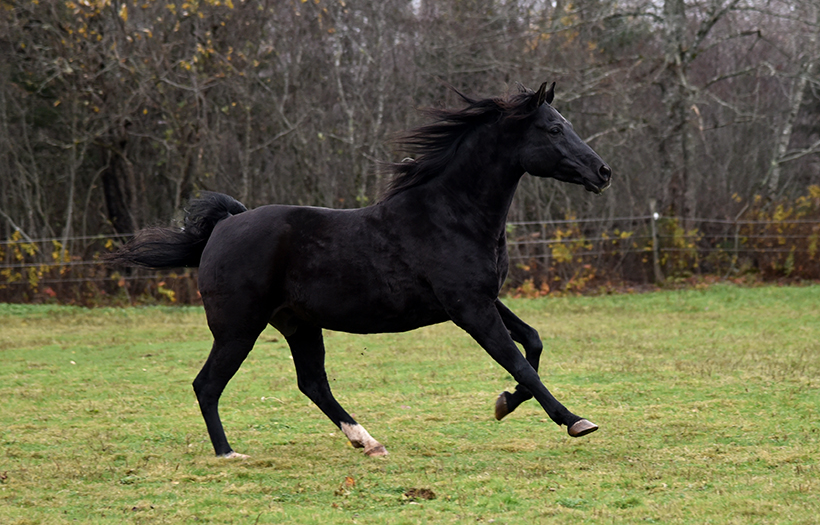Is this feed making my horse hot?

As horse feed reps, one of the most common comments we get is “this feed is making my horse hot.” No matter how many times you try to explain to the horse owner that the feed should not be making their horse hot, the feed always gets blamed. It’s time to take a step back and look at feeds and situations and what makes horses “hot.” Over the next few weeks we will address the issues of the hot horse and what will make your horse hot and what are simply myths. First we will start with carbohydrates.
Everyone knows that sugar makes children hyper. We have all witnessed it. You give the kids candy and not long after they are bouncing off that walls. Yes, horses are the same; sugar and starches will give them an energy “rush” or, better yet, a glycemic high.
Carbohydrates are broken down into two main categories; structural carbohydrates and non-structural carbohydrates. Structural carbohydrates are basically what you know as fibre. They encompass pectins, hemi-cellulose, cellulose and lignin. These types of carbohydrates are what give the stems of hay their rigidity or structure as implied by the name. This type of carbohydrate can only be broken down by special bacteria in a horse’s hind gut. This means it cannot be digested quickly, and definitely will not be providing your horse with a glycemic response to make him hot. Instead, the bacteria working hard to digest this fibre excrete a waste product called volatile fatty acids (VFA’s). Some of these VFA’s can then go on to energy production, but this overall process is a slow one and non-insulin inducing.
Non-structural carbohydrates cover all other carbohydrates, which are organic acids, simple sugars and starches. The non-structural carbohydrates are the culprit for making your horse hot. These carbohydrates are broken down very easily into fructose and glucose in the horse’s small intestine and absorbed. This ultimately triggers an insulin response which allows the glucose to be absorbed from the blood stream and utilized, essentially making your horse ‘hot’.
When looking for a feed that won’t make your horse hot look for one with beet pulp or soy hulls as the fibre source with at least a 15% fibre level. This will allow your horse to have a very digestible and utilizable fibre source that will help to provide an even energy source. Also look for a decent level of fat in the feed as well. Fat is a high-energy source, meaning it contains a high level of calories but does not induce a glycemic response. In addition, omega-3 fatty acids from fat have demonstrated to enhance insulin effectiveness, thereby maintaining healthier insulin levels. The higher the fat and fibre levels, the lower the non-structural carbohydrates will be of that feed and, therefore, the calmer your horse will be.
Hopefully this helps to make sense of which carbohydrates deliver what type of energy for your horse. Take the time to read feed tags and ingredient lists to learn what the guaranteed analysis of that feed is and what your energy source is. These aspects will play a big role in your horse’s energy level and whether or not he is “hot.” In the next post we will continue discussing other reasons your horse may be “hot” and address some misunderstandings.
